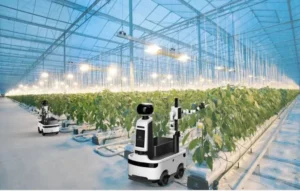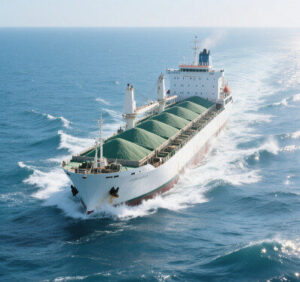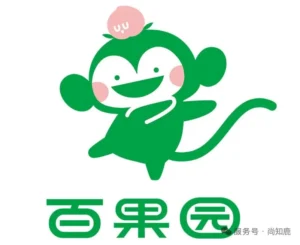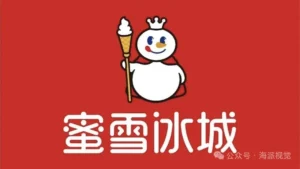China’s potassium fertilizer industry has once again demonstrated its resilience and growth potential. The “Big Five” companies—Yanhu Co., Ltd., Asia-Potash International, Zangge Mining, Dongfang Tower, and SDIC Luobupo Potassium—collectively reported a combined operating revenue of RMB 17.092 billion and a net profit of RMB 7.072 billion in the first half of 2025. This represents a 3.76% year-on-year increase in revenue and a 30.31% surge in net profit, reflecting strong performance despite evolving market dynamics. Yanhu Co., Ltd. led with RMB 2.515 billion in net profit, likely due to its expansion into international markets and strategic acquisitions. Zangge Mining’s net profit of RMB 1.8 billion can be attributed to its focus on technological innovation and cost reduction efforts. SDIC Luobupo Potassium’s RMB 1.409 billion net profit likely stems from its successful market diversification and improvements in product quality. Asia-Potash International’s 216.67% year-over-year growth in net profit to RMB 855 million may be due to its effective resource integration and optimization strategies. Finally, Dongfang Tower’s 79% year-over-year increase in net profit to RMB 493 million may be due to strengthened partnerships and improved supply chain management.
Profit Surge: Price Momentum and Operational Efficiency
The primary driver of this profit surge is the robust performance of potassium fertilizer prices in the first half of 2025. According to SCI Consulting, China’s domestic production of resource-based potassium chloride decreased by 8.70% to 2.31 million tons, while demand reached 8.77 million tons. Imports totaled 6.2794 million tons, resulting in over 70% import reliance. Global supply constraints, partly due to geopolitical tensions and weather-related disruptions, have limited the availability of potassium resources. The resulting supply shortage, combined with increasing agricultural demand worldwide, has driven up prices significantly. The industry’s reliance on foreign supplies, coupled with these global constraints, created an environment conducive to price hikes. Consequently, the gross profit margin of the four listed companies (excluding SDIC Luobupo Potassium) increased from 50.31% to 58.77%, translating to RMB 10.625 billion in potassium product revenue—over 80% of their total earnings. Asia-Potash International’s exceptional performance was buoyed by a 48.53% revenue expansion to RMB 824 million, underpinning its 216.67% net profit growth. Rising prices have necessitated adjustments in domestic farming practices, prompting some farmers to seek more cost-effective methods or alternative fertilizers.
Key Market Trends: Beyond Growth, Challenges, and Transformations
Several critical trends are shaping the future of China’s potassium fertilizer industry beyond its strong financial performance:
1. Sustained Price Volatility and Geopolitical Risks:
- Global potash prices remain high due to supply chain disruptions, especially among traditional exporters such as Canada and Russia. China’s heavy reliance on imports (over 70%) makes it susceptible to geopolitical fluctuations.
- The recent signing of long-term supply contracts with Laos and Kazakhstan reflects China’s efforts to diversify its sourcing and reduce its reliance on politically sensitive regions.
2. Aggressive Capacity Expansion and Resource Control:
- The “Big Five” are accelerating overseas investments, particularly in Laos. Asia-Potash International’s 3-million-ton capacity, coupled with its second and third 1-million-ton projects nearing completion, will increase China’s self-sufficiency.
- Dongfang Tower’s new 1-million-ton plant in Laos and Zangge Mining’s 984-million-ton resource reserve certificate in the country highlight a shift toward securing overseas reserves to offset domestic production constraints.
3. Sustainability and Green Technologies:
- Environmental regulations are pressuring producers to adopt cleaner technologies. For example, Yanhu Co., Ltd. is testing solar-powered brine evaporation systems to reduce energy costs and carbon emissions.
- Recycling waste brine and improving resource utilization efficiency are becoming industry norms that align with China’s “dual carbon” goals.
4. Digitalization and Supply Chain Optimization:
- Companies are using AI and the Internet of Things (IoT) to optimize mining, production, and logistics. SDIC Luobupo Potassium’s digital mine platform increased production efficiency by 15% in the first half of 2025.
- Blockchain technology is being explored to enhance transparency in sourcing and traceability, addressing international sustainability requirements.
- Integration and Consolidation:
- Vertical integration is gaining traction. For instance, Zangge Mining’s acquisition of downstream compound fertilizer producers aims to capture higher margins in value-added products.
- M&A activity is expected to increase as smaller companies struggle to meet environmental and scale requirements, which could lead to further industry consolidation.
Global Implications: China’s Role in the Potash Market
China’s intensified focus on producing and importing potassium fertilizer has significant global ramifications:
- Price Dynamics: As the world’s largest importer, China’s demand fluctuations directly impact global potash prices. The Big Five’s expansion could reduce reliance on Canada, Russia, and Belarus, which could stabilize markets.
- Sustainability and innovation: Although growth is driven by profits, Chinese companies are increasingly adopting sustainable practices, such as waste recycling and resource-efficient extraction, to align with global ESG standards.
- Geopolitical Influence: Diversifying sourcing (e.g., investing in Laos) reduces the geopolitical risks associated with traditional suppliers and enhances China’s food security.
Outlook: Balancing Growth and Challenges
Looking ahead, several key factors will shape the industry:
- Supply-chain resilience: Ensuring stable access to raw materials and efficient logistics amid global trade uncertainties.
- Technology advancements: Investing in extraction technologies (e.g., brine processing and renewable energy integration) will cut costs and reduce the environmental footprint.
- Regulatory Landscape: China’s evolving environmental and export policies could impact profitability margins.
As China’s potassium giants consolidate their dominance, their strategies will reshape domestic and global potash markets. Ensuring China’s long-term food security and agricultural competitiveness depends on the industry’s ability to balance growth, sustainability, and geopolitical risks.
Data sources: SCI Consulting, company financial reports, and Gungnong Co., Ltd. Interim Report and Corporate Announcements.









